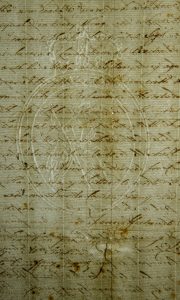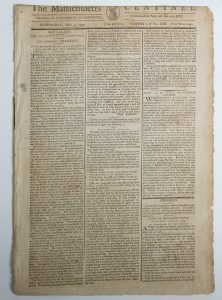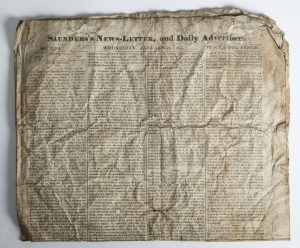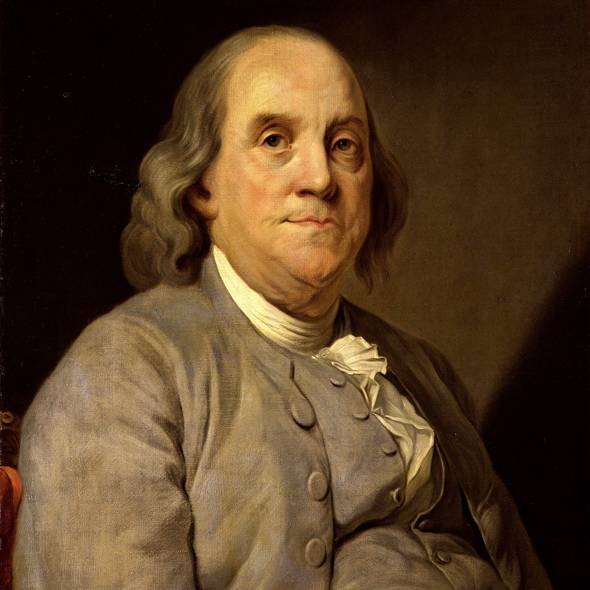Artefacts
Items from our collection, relating to the House, Franklin, and the Craven Street Bones
Ben Franklin’s Wallet
The leather wallet was used by Franklin during his time in London between 1757 – 1775. It is shaped like an envelope with a small clasp on the front to open and lock the wallet. Inside there is a hand-written inscription reading ‘B.Franklin, Craven Street, Strand, London.’
This unique Franklin artefact is on permanent display at the House. These wallets, or pocket books, would have been used to carry money but also calling cards and other paper items.
Human Skull
This female skull was excavated in the basement of 36 Craven Street in 1998. It has been dissected in several directions. The skull cap was first removed, then the back of the head was cut on both sides, followed by a division of the frontal bone in two. This was then severed on either side of the nasal bone, probably to allow observations on the eyes. Note the ‘slip marks’ made by the saw along the cuts. Its presence links directly to William Hewson who ran a small Anatomy School at 36 Craven Street from the early 1770’s. Hewson was the husband of Polly, daughter of Franklin’s landlady, Margaret Stevenson.
This marble bust of Franklin now sits in Franklin’s Parlour. It measures 490mm at its highest point (base to top of head) x 335mm at its widest point (should width). The bust dates to circa. 1800 and is in the style of French sculptor Jean-Antoine Houdon.
This bone is the lower part of a femur (thigh bone) and it was excavated in the basement of 36 Craven Street in 1998. It has been cut through from front to back, and finally snapped off (a circumferential fine knife mark may be noted c. 10cm below the cut). This is most likely the result of cutting the soft tissue prior to severing the bone for practicing amputation, leaving ample skin to fold around the ‘stump’ once removed. Its presence links directly to William Hewson who ran a small Anatomy School at 36 Craven Street from the early 1770’s. Hewson was the husband of Polly, daughter of Franklin’s landlady, Margaret Stevenson.
This decorative door knocker has a handle in the shape of a rams head. It is thought to be the original door knocker of 36 Craven Street.
This section of plastron (the bony under-carriage of a turtle’s spine) was excavated in the basement in 1998. Its presence links directly to William Hewson who ran a small Anatomy School at 36 Craven Street from the early 1770’s. Hewson used a turtle in an experiment at the Royal Society in 1770 to highlight the presence of the lymphatic system. Hewson was the husband of Polly, daughter of Franklin’s landlady, Margaret Stevenson.
The letter was written by Franklin to his sister Jane Mecom from the House on 13th January 1772.
This is the obituary of Benjamin Franklin printed in the Massachusetts Sentinel on 5 May 1790. Under the heading ‘Miscellany’ it reads ‘The Immortal Franklin’ and goes on to include Benjamin Franklin’s obituary.
This newspaper is called ‘Saunder’s News-letter, and Daily Advertiser’ and is dated Wednesday, January 24, 1827. It is smoke damaged and was found blocking one of the fireplaces in the House during the renovation of the building in the 1990s.






